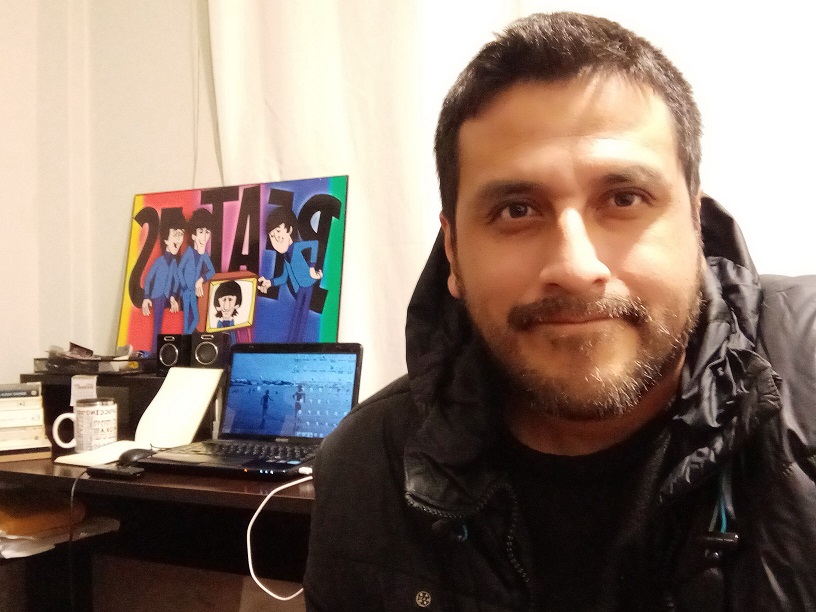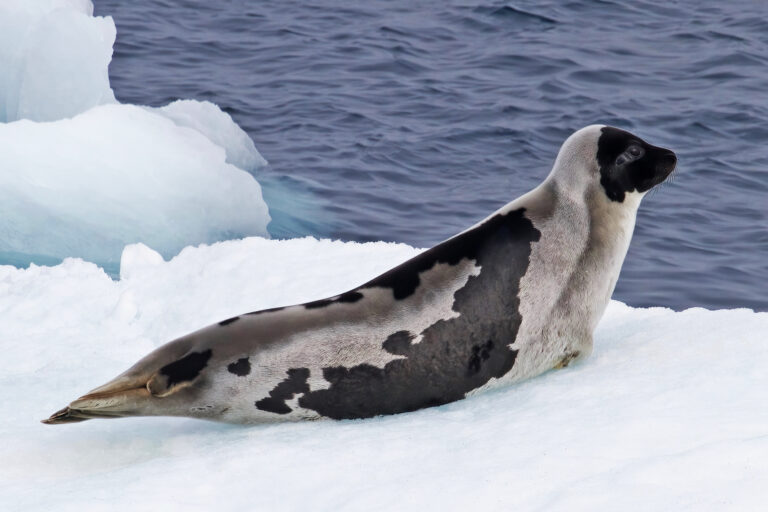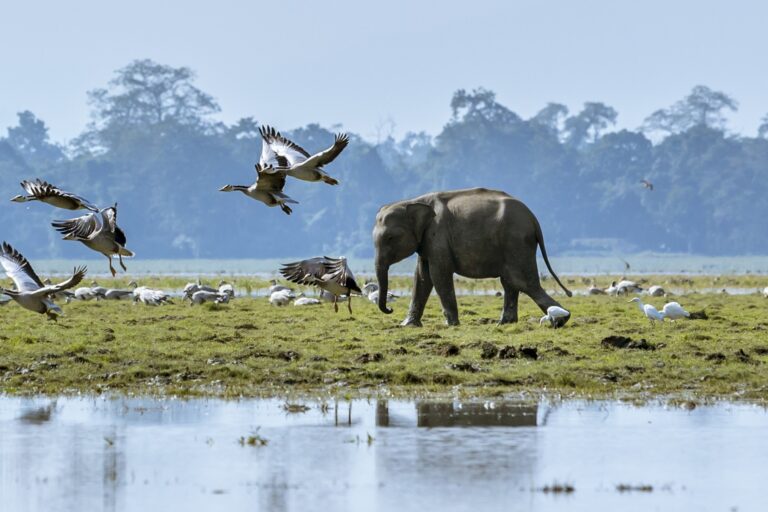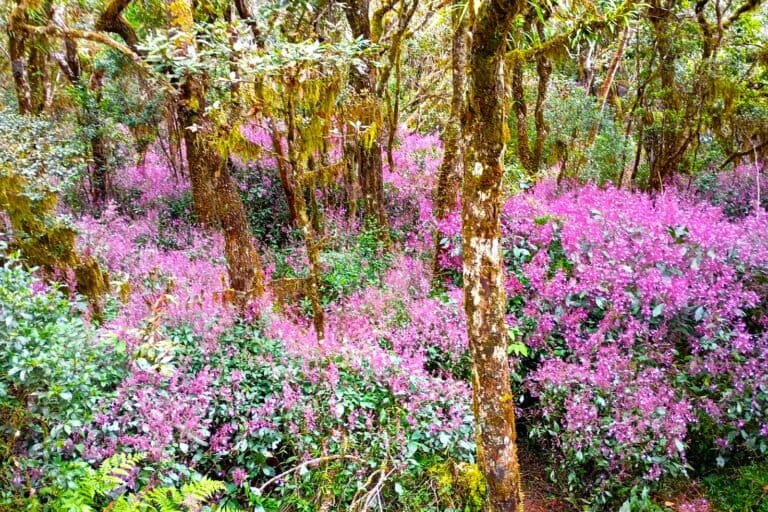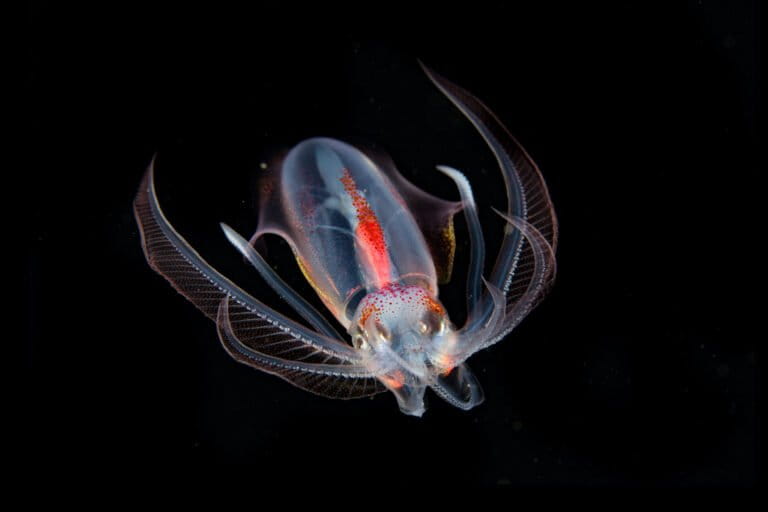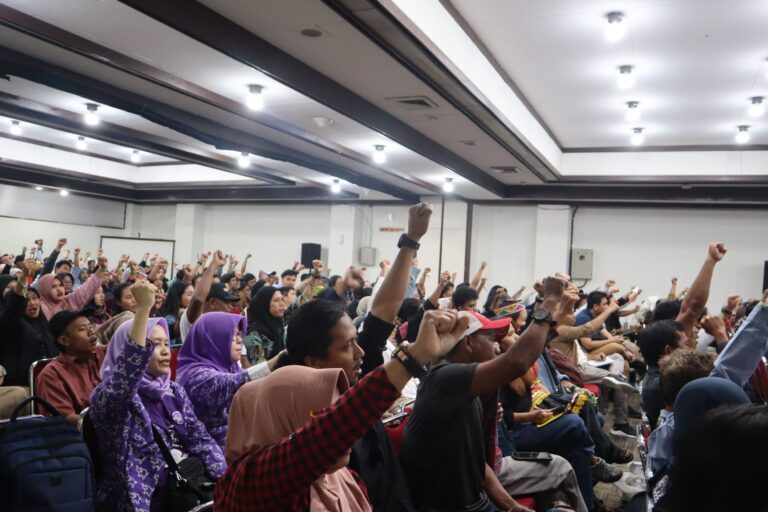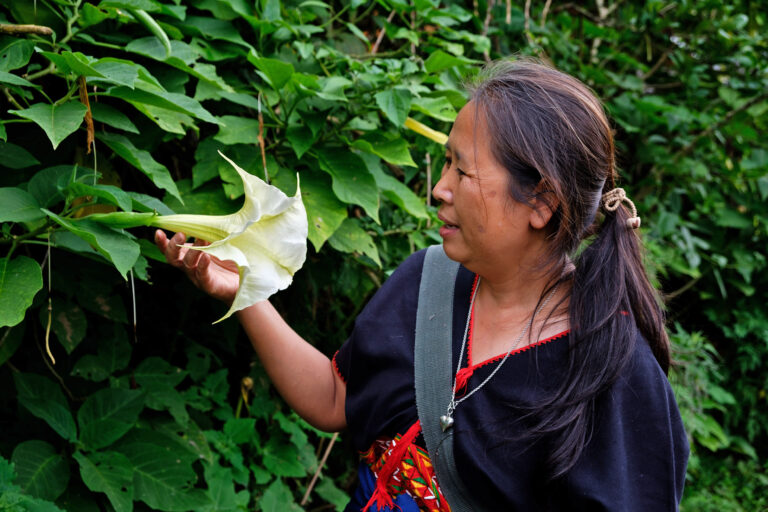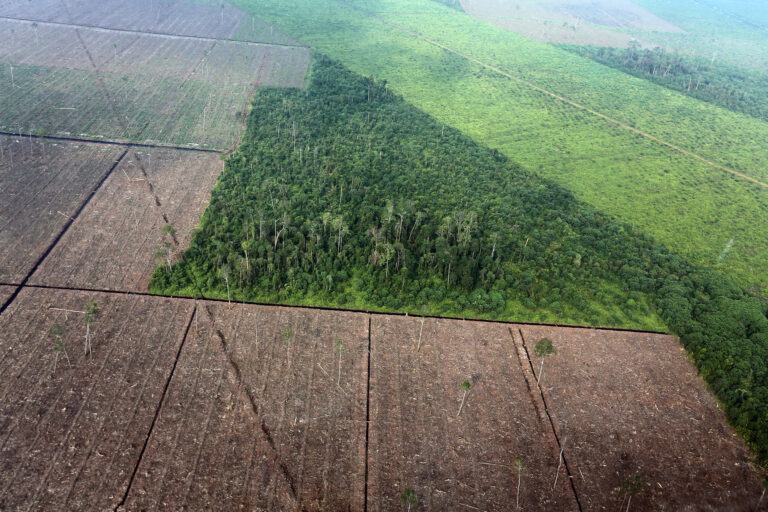- The Santa Martha Indigenous territory is one of the nine Indigenous Cacataibo communities between Huánuco and Ucayali in Peru.
- Increasing numbers of outsiders are invading the territory and deforesting large swaths of Indigenous land, largely to grow coca which is used to make cocaine.
- Residents report they are often subject to intimidation, threats and even murder attempts if they speak out about the incursions.
- Already under-monitored due to their remoteness, these areas have gotten even less government attention during the COVID-19 pandemic due to movement restrictions put in place to reduce the infection rate.
Mario’s nervousness is evident on the other end of the phone as he speaks about how three men tried to stab him in November 2020. This wasn’t the first time something like this happened; Mario says he has faced harassment and threats for more than a year for denouncing deforestation in his village, the Indigenous community of Santa Martha in central Peru.
Another situation allegedly occurred in 2019 when he unintentionally approached an airstrip used to transport coca while walking through a field near town. Mario recalls how a group of strangers cornered him and issued a stark warning.
“We’re going to kill your whole family,” Mario claims they said.
Mario says that every so often he receives anonymous calls, the voices on the other end warning him that he is being watched and he should not report the illegal fields of coca that are becoming more and more common. However, Mario says this hasn’t deterred him from making reports to the Native Federation of Cacataibo Communities (Fenacoca) .
He believes this is why, in November, three men surrounded him and tried to stab him. He says they likely intended his death to look like the result of a street brawl and that he’d likely be dead if his relatives weren’t close at hand to chase off his attackers.

Mario lives in a wooden house surrounded by small corn fields. He says that sometimes he sees groups of strangers waiting among his crops and it terrifies him; shortly before his interview with Mongabay Latam, he stumbled upon open cans of tuna and bags of cookies in his fields, evidence, he says, that would-be assailants had been waiting in his fields for him to leave his house. His voice breaks with fear as he describes the desperate situation that has become his daily life.
“I am wanted and I am quite afraid,” Mario said. “My sisters, my brothers-in-law, almost my entire family is threatened. Maybe we have gotten into fighting against them but there are already too many. Each day they increase by five, six. I can’t go out, I don’t have confidence…
“I don’t know what to do.”
Deforestation on the rise
Santa Martha is one of the nine Indigenous Cacataibo communities between Huánuco and Ucayali. The community is divided into two neighborhoods: Campo Verde and Nueva Alianza. Some 150 families, or approximately 500 individuals, live within the 14,485 hectares encompassed by Santa Martha.
Sandra Ríos, a researcher at the Common Good Institute (IBC), said that, according to law and the title deed granted to Santa Martha, members of the community may dedicate 5,400 hectares to agriculture or pasture for livestock. The rest of the land is forested and should be preserved.

The IBC, a civil association that supports rural communities in the management of their resources, has documented that 118 hectares were deforested in Santa Martha in 2016. IBC also reports that during workshops its held over the past few years, members of the Indigenous community have said that deforested lands were no longer being invaded and used for agricultural purposes, but for illegal coca crops and maceration pits.
Satellite data from the University of Maryland visualized on Global Forest Watch shows recorded 2,535 deforestation alerts in Santa Martha between January and October 2020.
However, Ríos added that a serious problem in many Indigenous communities, including Santa Martha, is that their plans do not specify which area should be for communal use. In other words, nobody really knows where Indigenous peoples can grow their food.
“It is unclear where community members decide to carry out these activities,” Ríos said. “They are very strict about the protection and conservation of the forest. At the same time, they report any deforestation they are not responsible for.”
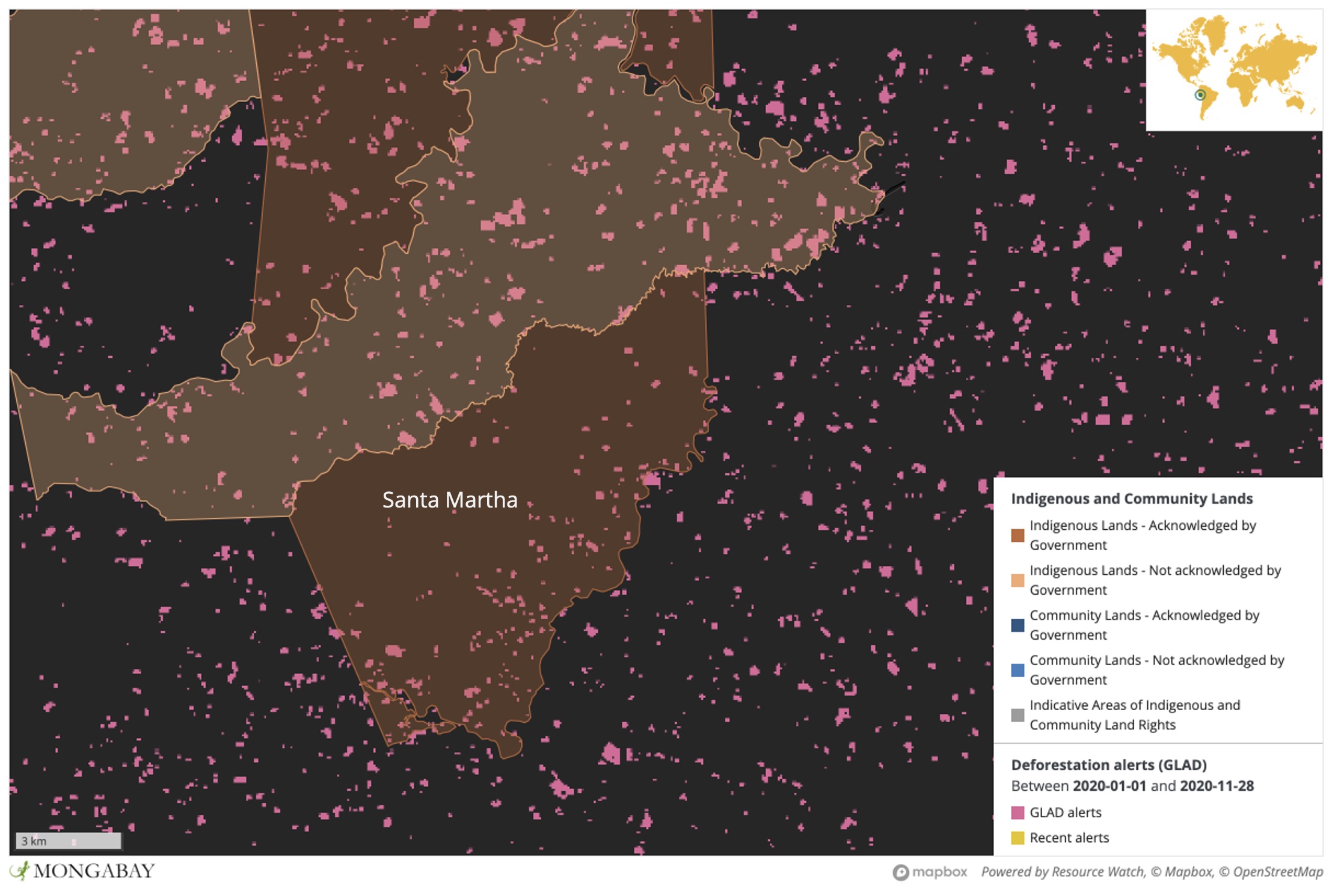
President of the Native Federation of Cacataibo Communities (Fenacoca), Herlin Odicio, estimates that there are currently 200 hectares of deforested land in Santa Martha. But one of the community leaders, who asked to remain anonymous, says that deforestation has already surpassed 600 hectares. Satellite data from the University of Maryland visualized on Global Forest Watch shows recorded 2,535 deforestation alerts in Santa Martha between January and October 2020.
To the south, the community is bordered by the Zungaruyacu River but it does not adjoin another Indigenous territory, which Ríos said makes it vulnerable to land invasions. Santa Martha has requested an extension into this area, but it has yet to be approved. Ríos said that the local governments have nevertheless granted title deeds to individual properties in the vicinity. She explained this has led to the “formalization” of land invasions, which in turn has resulted in deforestation.
“Satellite images of this area show that there is practically no more forest due to its occupation by individual properties,” Ríos said. “These title deeds were only granted after the request for extension.”
To the north, Santa Martha shares a border with the native community of Unipacuyacu, another Indigenous Cacataibo territory sources say is also affected by land trafficking and intimidation. Unipacuyacu reportedly does not have a title deed despite the fact its leaders have been requesting one for 10 years, which sources say has resulted in invasion and deforestation of Indigenous land.
The situation came to a head on April 12, 2020, when Unipacuyacu leader Arbildo Meléndez was shot and killed in the forests of Santa Martha after receiving threats for several months. Meléndez reportedly was targeted by land traffickers due to his determination that his community acquire the title to their land.
N0 man’s land
Herlin Odicio said that the incursions in Santa Martha worsened in 2018, and have been facilitated by failure of the state to precisely specify the location of parcels in land titles. During inspections and georeferencing conducted by Fenacoca with the support of IBC, Odicio found several outsider villages that had violated the borders of Cacataibo Indigenous communities such as Santa Martha and Sinchi Roca.
“As the boundaries are not well defined, the Indigenous peoples of these areas cannot be sure if their territory has been invaded or not. By the time they realize, the invaders have already settled in,” Sandra Ríos said, explaining that this is how the invasions keep expanding. She said that afterwards, invaders generally cut down trees and make it look like they are using the land for agriculture, which allows them to obtain title deeds in their names and occupy the area legally

A Cacataibo leader who spoke to Mongabay on condition of anonymity said that the inhabitants of these villages established on the edges of Santa Martha are not Indigenous but rather settlers who have come from Codo del Pozuzo or the city of Huánuco. According to the leader, they sell plots of land to drug traffickers, who then convert them into coca plantations which they gradually expand. The leader said they directly observed this happening around the villages of Bellavista, Punonga and Nuevo Horizonte.
“Deforestation is turning Santa Martha into an island of forest in the middle of an area devoted to agriculture and pasture. Our maps have shown how this dynamic has played out year after year,” Ríos said.
Mario said first the invaders clear the ground of undergrowth, after which the trees are cut down with chainsaws; then approximately one month later, everything is burned and planting begins. Mario said the owners of each coca plot only check on them once a month or so, but will leave representatives in the village to oversee production and guard the land. He said the men who attacked him were three such representatives.
Harassment and intimidation
The residents of Santa Martha report that they’ve become used to living in fear of the outsiders who work in the coca plantations near their villages. Cacataibo members interviewed by Mongabay said they feel controlled and vulnerable, even more so since the beginning of the COVID-19 pandemic, when patrols stopped coming to the area. The Cacataibo leader said that neither the police nor the district attorney have come to Santa Martha since the outbreak in early 2020. They said that as a result, this year has seen a huge increase in land trafficking and illegal plantations. To defend itself, the community formed surveillance committees, but this resulted in a series of threats from coca growers and members say they’re left without options.
Fenacoca’s Herlin Odicio said that on Sept. 7, he was visited by a Colombian national at his house in the native Ucayali community of Yamino. The foreigner wanted to negotiate with him so that he would stop reporting coca plantations in Cacataibo Indigenous territories.
“ ‘We know who you are and we know who’s reporting us’,” Odicio said the man told him. Odicio also said that the man mentioned airstrips or “narcostrips” in Codo del Pozuzo and within Santa Martha, as well as agreements his group supposedly had with local authorities to freely produce and traffick drugs.

Odicio says that the Colombian claimed he would return to continue their conversation, but he never saw him again. He asked the local authorities for help, and they assigned him a police escort who provides him with partial protection.
“I still can’t relax because the escort is only with me while I’m at work, not afterwards,” he explains. Odicio says that leaders of the Interethnic Association for the Development of the Peruvian Rainforest – Ucayali (ORAU), the Federation of Native Communities of Ucayali (Feconacu) and the community of Unipacuyacu have had similar experiences.
But what the Colombian told Herlin Odicio that day was true. In Santa Martha, there are at least two airstrips used by light aircraft carrying shipments of cocaine. According to community members, one is between the River Zungaruyacu and the River Venado, on the border between Santa Martha and the village of Santa Teresa. The other is a dirt road used also for the transit of light aircraft that connects the native community with Codo del Pozuzo. The Cacataibo leader says that residents of Nueva Alianza appealed to the mayor’s office of Codo del Pozuzo to build this road. They wanted to improve access to their land; however, Odicio said that shortly after the road was built, it was being used by coca growers and traffickers. He added that up until two years ago, there was an illicit airstrip near Campo Verde. The authorities destroyed it, but this only led to the construction of another located near the village of Santa Teresa.
According to Jaime Antezana, an expert in public security and drug trafficking, Codo del Pozuzo is primarily a cattle-raising district. But the level terrain that makes it suitable for pasture also makes it an ideal location for airstrips.
“The airstrips are located on the plain, but if you go up into the hills you will find the coca plantations,” Antezana said.
The provinces of Puerto Inca (Huánuco), to which Codo del Pozuzo belongs; Oxapampa (Pasco); Atalaya (Ucayali) and Satipo (Junín) converge in an area where the Peruvian National Police destroyed 40 airstrips between July 17 and Sept. 4, 2020.

Antezana said that between the outbreak of the pandemic in Peru in March and the second week of May, drug production and trafficking came to a standstill. However, he added that during this time the global demand for cocaine increased, which led to drug traffickers breaking quarantine. In his opinion, the pandemic also forced many families to seek a new, immediate source of income, which is why a large number of migrants came from various parts of Loreto, San Martín, Ucayali, Junín, Ayacucho and Huánuco to clear forest and cultivate coca.
“This influx of migrants coincided with the return of those who had been unable to work due to restrictions on movement,” Antezana said. “So there was an explosion of coca growing and, therefore, deforestation.”
Antezana said that during the second half of 2020, native communities reported a higher number of invasions by colonists intending to use the land for coca cultivation. He said that the situation has got out of hand, resulting not only in land theft but also threats and violence carried out against the Indigenous community. Furthermore, Antezana explained that the pandemic-caused slowdown in coca eradication programs is another has contributed to the expansion of plantations and related crimes.
“According to statistics, 25,000 hectares of coca are usually eradicated annually in Peru,” Antezana said. “[In 2020] the figure had not even reached 2,000 [by November].”
Calls for action
According to the United Nations Office on Drugs and Crime (UNODC), the cultivated area in native communities increased from 2,757 hectares in 2016 to 3,366 hectares in 2017; in other words, the amount of Indigenous land used for cocaine production in Peru increased 22% in one year.
The provincial attorney of the Specialized Attorney’s Office for the Environment (FEMA) of Ucayali, José Luis Guzmán Ferro, whose jurisdiction encompasses the community of Santa Martha, said that the presence of the state is very limited in remote parts of the rainforest and that criminals are well aware of this and use it to their advantage. He added that crime has increased due to the pandemic and its restrictions.

Ferro said he and other officials have visited areas like Santa Martha to carry out coca eradication projects, but that drug traffickers merely wait for the authorities to leave before continuing to clear the forest.
“These people who work in the drug trade are aware of the state’s weaknesses,” Ferro said. “They do nothing while the authorities are present.”
José Guzmán suggested the problem be dealt with in a more radical way, and advocates decisive and forceful action be taken in order to destroy all illegal plantations and stores of cocaine. He said that what is happening in Santa Martha and other Indigenous territories are regarded by the government as illicit drug trafficking and not as environmental crimes. Thus, in situations like this, FEMA is responsible for any actions against drug producers and traffickers.
The Ombudsman’s Office stated that land trafficking and drug trafficking, together with illegal mining, are linked directly to insecurity and attacks against Indigenous communities. For lawyer Alicia Abanto, Ombudsman Associate for the Environment, Public Services and Indigenous Peoples, the context of the pandemic has allowed for illegal activities to intensify and, as a result, there has been an increase in land grabbing and deforestation.
She says that the state has made progress on the legal recognition of the rights of Indigenous leaders, but this is not reflected in the actual protection of their territories or residents. Abanto, like Guzmán, considers the presence of the state weak in the remote areas where Indigenous peoples are subject to threats and attacks against their communities.
The main goal at this point, she said, is to strengthen the relationship between grassroots Indigenous organizations and local authorities (mayors, prefects, police chiefs and district attorneys). Abanto explained that the rift between the two has meant that it has not been possible to, for example, provide protection to Indigenous peoples who have been threatened.
“It is a serious problem and a harsh reality in our country,” Abanto said.
*For their safety, the names of some interviewees have been changed in order to protect their identities.
Banner image produced by the members of the community of Santa Martha.
Editor’s note: This story was powered by Places to Watch, a Global Forest Watch (GFW) initiative designed to quickly identify concerning forest loss around the world and catalyze further investigation of these areas. Places to Watch draws on a combination of near-real-time satellite data, automated algorithms and field intelligence to identify new areas on a monthly basis. In partnership with Mongabay, GFW is supporting data-driven journalism by providing data and maps generated by Places to Watch. Mongabay maintains complete editorial independence over the stories reported using this data.
Feedback: Use this form to send a message to the editor of this post. If you want to post a public comment, you can do that at the bottom of the page.


